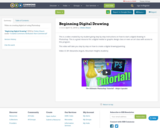
Video on creating digital art using Photoshop
- Subject:
- Arts and Humanities
- Material Type:
- Activity/Lab
- Date Added:
- 04/12/2018

Video on creating digital art using Photoshop
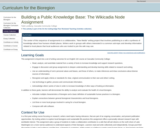
The center of this sequence of assignments is a collaborative, "New Media" writing project that involves publishing to a wiki a synthesis of knowledge about how humans inhabit places. Writers work in groups with others interested in a common sub-topic and develop information related to local places that local audiences who are invited to join the wiki may use.
(Note: this resource was added to OER Commons as part of a batch upload of over 2,200 records. If you notice an issue with the quality of the metadata, please let us know by using the 'report' button and we will flag it for consideration.)
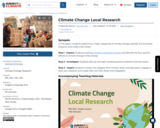
SYNOPSIS: In this lesson, students explore four major categories of climate change, identify one to further research, and create a fact sheet.
SCIENTIST NOTES: This lesson introduces students to factsheets and infographics and how powerful they can be in providing and relaying information. Students start the lesson by reading through a factsheet/infographic about New Jersey’s changing climate followed by a partner discussion about how the factsheet makes them feel. Students are then able to pick one of four categories, do research about their topic, and create their own factsheet and infographic. Student factsheets/infographics are shared and compared/contrasted with one another. This lesson allows for multiple instances of student autonomy and provides a creative outlet for discussing climate change. It is hereby recommended for teaching.
POSITIVES:
-This lesson can be used in English, social studies, computer science, digital art, or science classes. It can be easily adjusted to be multidisciplinary.
-Students are given voice and choice in this lesson.
-Students become agents of change in their own communities, identifying problems and solutions.
ADDITIONAL PREREQUISITES:
-Students should be familiar with the basics of climate change.
-Students should be familiar with school-appropriate websites from previous school-related research.
DIFFERENTIATION:
-Students’ communication can be as simple or as thorough as you desire. They will need more time to research and craft their communication if you want their writing to be more fact-based and robust.
-Students can work independently or in a group with adjusted requirements.
-Teachers can use subject and grade level vocabulary already being learned in class. Teachers can add more vocabulary words in the glossary slide of the Teacher Slideshow.
-To deepen a social studies or global connection, students can explore the history of their chosen issue, how other countries are addressing the issue, or focus on a global solution strategy.
-To connect to computer science or digital art, students can create their infographic and fact sheet digitally.
-To further develop practical science or engineering skills, students can work together to create and implement a workable solution at the school, home, or community level.
-Some students may wish to communicate their advocacy via social media. Make sure to follow all school rules and monitor students’ progress if you allow this in the classroom.

Short Description:
NewParaColour theory covers a long history from antiquity to modern times. It includes academic and scientific investigations into how we see and understand colour. It also includes practical applications for using colour in creative work.NewParaThis learning resource covers the history of colour theory, how we see colour, and how to use colour systems to mix colour and create colour relationships.NewParaAlso included in this resource are quizzes to test your knowledge, and practical learning activities to guide users in applications of colour theory for art and design. It's useful for anyone working with colour in creative and scientific fields.
Word Count: 51635
(Note: This resource's metadata has been created automatically by reformatting and/or combining the information that the author initially provided as part of a bulk import process.)

Creating Playable Stories Series
Word Count: 19868
(Note: This resource's metadata has been created automatically by reformatting and/or combining the information that the author initially provided as part of a bulk import process.)

This course is an introductory exploration of documentary film theory and production, focusing on documentaries about science, engineering, and related fields. Students engage in digital video production as well as social and media analysis of science documentaries. Readings are drawn from social studies of science as well as from documentary film theory. The courses uses documentary video making as a tool to explore the worlds of science and engineering, as well as a tool for thinking analytically about media itself and the social worlds in which science is embedded. The course includes a hands-on lab component devoted to digital video production, in addition to classroom lectures and in-class film screenings.
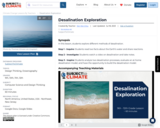
SYNOPSIS: In this lesson, students explore different methods of desalination.
SCIENTIST NOTES: This lesson teaches students about potable water scarcity and then explores desalination as a possible solution in water-stressed areas. Desalination technologies are introduced, and energy and environmental costs of desalination are discussed. A video resource explores a novel desalination technology, the Solar Dome, being built in Saudi Arabia. Students are tasked with designing and building their own solar still, and opportunity is given for design optimization. This lesson is recommended for teaching.
POSITIVES:
-This lesson can be multidisciplinary and can be completed in engineering, computer science, digital art, English or science classes.
-Students and teachers are given voice and multiple areas of choice in this lesson.
-Students become agents of change in their own communities, identifying problems and solutions.
-Students and teachers can make this conceptual, practical, or hands-on.
-This lesson can be spread out over several days and be considered a mini-unit.
ADDITIONAL PREREQUISITES:
-Students should be familiar with the basics of climate change.
-Students should be familiar with the basic scientific concepts of osmosis.
-Students should be familiar with basic engineering concepts like scaling and design.
DIFFERENTIATION:
-Students can work independently or in a group with adjusted requirements.
-Teachers can use subject and grade level vocabulary already being worked on or learned in class. Teachers can add vocabulary words in the glossary slide of the Teacher Slideshow.
-To further develop practical science or engineering skills, students can work together to create and implement a workable desalination solution at the school, home, or community level. Students can lead a workshop for family, an environmental club, or the community.
-Some students may wish to communicate their advocacy via social media. Make sure to follow all school rules and monitor students’ progress if you allow this in the classroom.
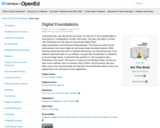
This book was written by two artist educators who teach digital art and design studio foundation classes. While teaching classes that take place in software laboratories, we noticed that many of our students expected to learn to use software, but gave little consideration to aesthetics or art and design history. A typical first day question is, "Are we going to learn Photoshop in this class?" This book is a mash-up of the Bauhaus Basic Course and open source software such as Inkscape, Gimp, Firefox, and Processing. We have taken some of the visual principles and exercises from the Bauhaus Basic Course and adapted them into exercises for these applications.

Word Count: 39268
(Note: This resource's metadata has been created automatically by reformatting and/or combining the information that the author initially provided as part of a bulk import process.)

Short Description:
The Digital Methods for Disability Studies course introduces students to a range of technologies and teaches them to think critically with and through media objects, practices, and processes. Through texts, videos, podcasts, games, and interactive activities, students develop their critical thinking, close-reading, textual analysis, platform analysis, visual analysis, and critical game design skills. This course offers students an opportunity to both interrogate the digital realm as a site of inequality and to harness digital tools and methods in addressing complex social challenges.
Long Description:
The Digital Methods for Disability Studies Pressbook is a course that introduces students to a range of technologies and teaches them to think critically with and through media objects, practices, and processes. Students ask critical questions about digital methods and explore how these methods work with other forms of knowledge production. Through texts, videos, podcasts, games, and interactive activities, students develop their critical thinking, close-reading, textual analysis, platform analysis, visual analysis, and critical game design skills. This Pressbook offers students an opportunity to both interrogate the digital realm as a site of inequality and to harness digital tools and methods in addressing complex social challenges. This digital-by-design course responds directly to the expressed needs of students for content that will prepare them to navigate digitally-mediated community, work, learning, cultural, and intimate spaces.
The course is comprised of ten modules. Each module introduces students to theoretical and practical conversations at the intersection of critical disability studies and digital methods. It offers both open-access required and suggested additional readings as well as multimedia resources by key figures in these intersecting fields. Through a series of ‘spotlights,’ students meet emerging and established Canadian disabled and Deaf makers. Innovative exercises integrated throughout each module allow students to engage with the materials independently in asynchronous online courses. In addition, instructor notes and sample documents in the Pressbook back matter point to how the course can be run collaboratively as a catalyst for critical dialogue.
Throughout this Pressbook course students will: Become skilled with multiple digital storytelling platforms, such as social media, podcasts, and Twine, in knowledge communication and dissemination Gain hands-on experience with meeting AODA standards and making the digital sphere accessible. Understand the fundamentals of crip technoscience, cripping digital media, and critical game design and how to apply them in cultural and social environments. Develop a nuanced understanding of accessibility and accommodation law, policy, and practice guidelines related to media design and production. Practice using this knowledge with digital media platforms and technologies. Critically reflect on how technological innovation proceeds from and is related to social, cultural, and embodied difference. Witness first-hand the impact of the digital divide on disabled people. Analyse sources of inequitable access to digital resources due to economic, physical, geographic, and infrastructure factors. Identify the affordances and constraints of media platforms and technologies with attention to access and disability justice. Reflect critically on the labour and ethics of digital making.
Word Count: 60302
(Note: This resource's metadata has been created automatically by reformatting and/or combining the information that the author initially provided as part of a bulk import process.)

A Field Guide to “Fake News” and Other Information Disorders explores the use of digital methods to study false viral news, political memes, trolling practices and their social life online. It responds to an increasing demand for understanding the interplay between digital platforms, misleading information, propaganda and viral content practices, and their influence on politics and public life in democratic societies.
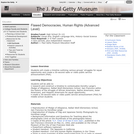
Students will create a timeline outlining various groups' struggles for equal opportunity and create a 30-second radio or video public service announcement (PSA).

This class covers the history of 20th century art and design from the perspective of the technologist. Methods for visual analysis, oral critique, and digital expression are introduced. Class projects this term use the OLPC XO (One Laptop Per Child) laptop, Csound and Python software.
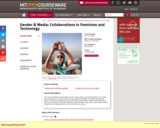
This course examines representations of race, class, gender, and sexual identity in the media, with a particular focus on new media and how digital technologies are transforming popular culture. We will be considering issues of authorship, spectatorship, (audience) and the ways in which various media content (film, television, print journalism, blogs, video, advertising) enables, facilitates, and challenges these social constructions in society.

This course examines representations of race, class, gender, and sexual identity in the media, with a particular focus on new media and how digital technologies are transforming popular culture. We will be considering issues of authorship, spectatorship, (audience) and the ways in which various media content (film, television, print journalism, blogs, video, advertising) enables, facilitates, and challenges these social constructions in society.
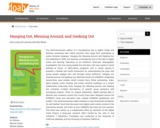
The tenth-anniversary edition of a foundational text in digital media and learning, examining new media practices that range from podcasting to online romantic breakups. Hanging Out, Messing Around, and Geeking Out, first published in 2009, has become a foundational text in the field of digital media and learning. Reporting on an ambitious three-year ethnographic investigation into how young people live and learn with new media in varied settings—at home, in after-school programs, and in online spaces—it presents a flexible and useful framework for understanding the ways that young people engage with and through online platforms: hanging out, messing around, and geeking out, otherwise known as HOMAGO. Integrating twenty-three case studies—which include Harry Potter podcasting, video-game playing, music sharing, and online romantic breakups—in a unique collaborative authorship style, Hanging Out, Messing Around, and Geeking Out combines in-depth descriptions of specific group dynamics with conceptual analysis. Since its original publication, digital learning labs in libraries and museums around the country have been designed around the HOMAGO mode and educators have created HOMAGO guidebooks and toolkits. This tenth-anniversary edition features a new introduction by Mizuko Ito and Heather Horst that discusses how digital youth culture evolved in the intervening decade, and looks at how HOMAGO has been put into practice. This book was written as a collaborative effort by members of the Digital Youth Project, a three-year research effort funded by the John D. and Catherine T. MacArthur Foundation and conducted at the University of California, Berkeley, and the University of Southern California.
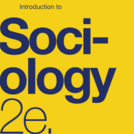
Introduction to Sociology 2e adheres to the scope and sequence of a typical, one-semester introductory sociology course. It offers comprehensive coverage of core concepts, foundational scholars, and emerging theories, which are supported by a wealth of engaging learning materials. The textbook presents detailed section reviews with rich questions, discussions that help students apply their knowledge, and features that draw learners into the discipline in meaningful ways. The second edition retains the book’s conceptual organization, aligning to most courses, and has been significantly updated to reflect the latest research and provide examples most relevant to today’s students. In order to help instructors transition to the revised version, the 2e changes are described within the preface.
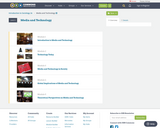

Describe the evolution and current role of different media, like newspapers, television, and new mediaUnderstand the function of product advertising in mediaDemonstrate awareness of the social homogenization and social fragmentation that occur via modern society’s use of technology and media
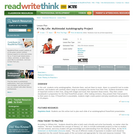
Students express themselves verbally, visually, and musically by creating multimodal autobiographies, exchanging ideas with other students and sharing important events in their lives through PowerPoint presentations.